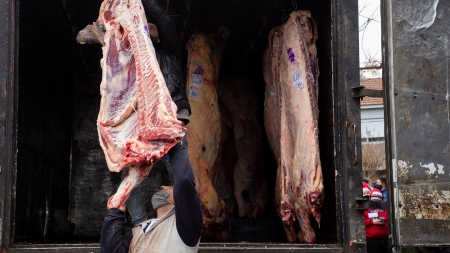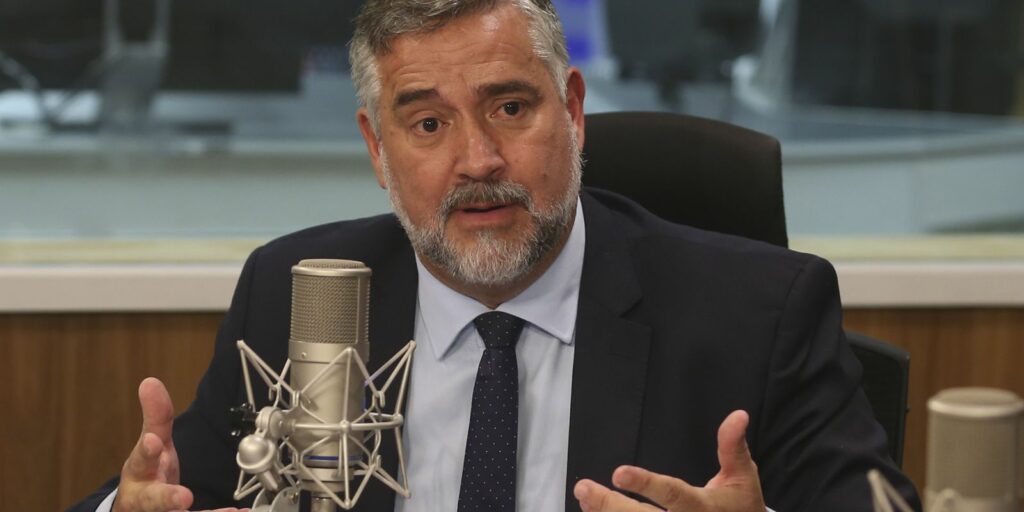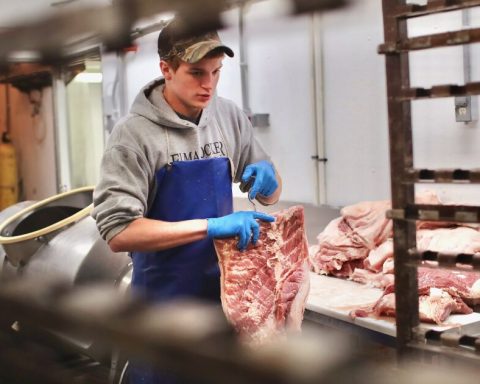The price of beef began to slow down in the middle of last year, with a cumulative rise that is around 30 points below general inflation, while there is a decline in domestic consumer demand.
According to a macroeconomic report from the association of agricultural businessmen CREA, the price of beef “since April it has been lagging strongly behind inflation; the meat category it increased only 0.9% per month in November and, in the year, accumulated a rise of 57.6%, almost 30 points below general inflation of 85.3%“.
The entity pointed out that “the variation in prices surprised downwards in November (4.9%)showing the lowest record since February” and that “to a large extent, the result was influenced by the evolution of the price of beef”. Likewise, he indicated that the price of beef slows down “in a scenario of high levels of slaughter and weak demand”.
In 2020, beef registered increases on the counter above 75% and in the first half of 2021 it registered new increases that totaled another 35% increase, which motivated measures by the national government to stop generalized increases in the value chain
Regarding the prices of the Treasury, José Lizzi, leader of the Livestock Area of CREA, told Télam that “the price of the cattle ranch for slaughter is 50% below the price that they should have had if they had maintained the price by copying inflation, plus seasonal behavior”.
In this sense, he pointed out that “these prices are bankruptcy for all activities” and explained that it is due to the fact that “drought makes people keep selling because it doesn’t have grass and the grains are expensive in relation to the price of meat”.
In addition, he pointed out how it causes the drop in consumption in the domestic market and “the exchange rate delay that means that export competitiveness does not pull on supply prices.”

Lizzi observed that, as of November, while “retail meat is around 35-38 percent below what inflation would have been copyingthat is, retail meat went up much more than the ranch, likewise both products are below inflation.”
For its part, the Center for Argentine Political Economy (CEPA) pointed out that “the impact of the drought in the productive zone, the increase in supply, the decrease in demand for domestic consumption and the drop in prices paid by China are factors that are being reflected in recent months in the agricultural and livestock market, and to a lesser extent on the counter”.
Based on data recorded by the Institute for the Promotion of Argentine Beef (Ipcva), CEPA indicated that the prices of the different cuts of beef registered a moderate rise (1.3%) in November 2022 compared to Octoberand in year-on-year terms these cuts increased their price by 56.6%, standing below the general increase in prices in the economy (92.4% year-on-year).
In the June-November period, the average increases of the different cuts (8%) were below inflation for the same period (43%), thus marking a change in the trend
In 2020, beef registered increases on the counter above 75% and in the first half of 2021 it registered new increases that totaled another 35% increase, which motivated measures by the national government to stop the generalized increases in the value chain.
“These measures made it possible to stop the upward trend and, between July and October, prices fell 3%,” according to CEPA.

At the same time, a substitute product for beef such as chicken registered for the eighth consecutive month in November an increase greater than the average for beef (2.8%).
If the number of kilos of fresh chicken that can be bought with one kilo of the most consumed beef cut (roast) is analyzed, it is observed that the gap between both products reached 4.04 kilograms in December 2021 and in December 2021. 2022 is shortened to 2.93 kilograms, due to the increase in the price of chicken.
In recent years, a reduction in the consumption of bovine meat was observed, which was replaced by other types of cheaper meat, such as poultry or pork: according to the Ministry of Agriculture, Livestock and Fisheries, per capita consumption of beef stood at 48.4 kg/inhab/year in November. “Faced with this scenario of falling consumption, the price has begun to moderate in recent months,” CEPA remarked.
Florencia Gutiérrez, CEPA economist, told Télam that “the impact of the dry spells in the fields generated a greater supply of calves available for slaughter, therefore production also increased both by quantity and by weight.”
This added to “an international context of demand that is still sustained but that has decreased considerably in recent times from China, mainly, and lower international prices; It was a hard six months for the sector”.
According to the export data for November, the average price per ton exported is currently at US$4,200, some US$2,100 less than the maximum reached in April and almost a third less than what was achieved a year ago, closed STRAIN
From now on, Gutiérrez analyzed that “if the drought is reversed, if there is abundant rain, next year’s campaign will generate more withholding, there will be less supply and then prices will surely take flight again.”
The impact of the drought in the fields implies more work, since the animals cannot be kept on their feet due to the lack of pasture: From January to November, bovine slaughter reached 12.3 million heads, marking a year-on-year growth of 3.7%.
In terms of meat production, so far this year, 2.85 million tons of beef were obtained, 4.9% more than the 2.72 million tons obtained between January and November of last year.
In addition, there was an increase in the average slaughter weightwhich during the mentioned period reached a record of 233 kilos, above the 230 kilos registered as maximums in 2021 and 2011.
According to the export data for November, the average price per ton exported is currently at US$4,200, some US$2,100 less than the maximum reached in April and almost a third less than what was achieved a year ago, closed STRAIN.


















